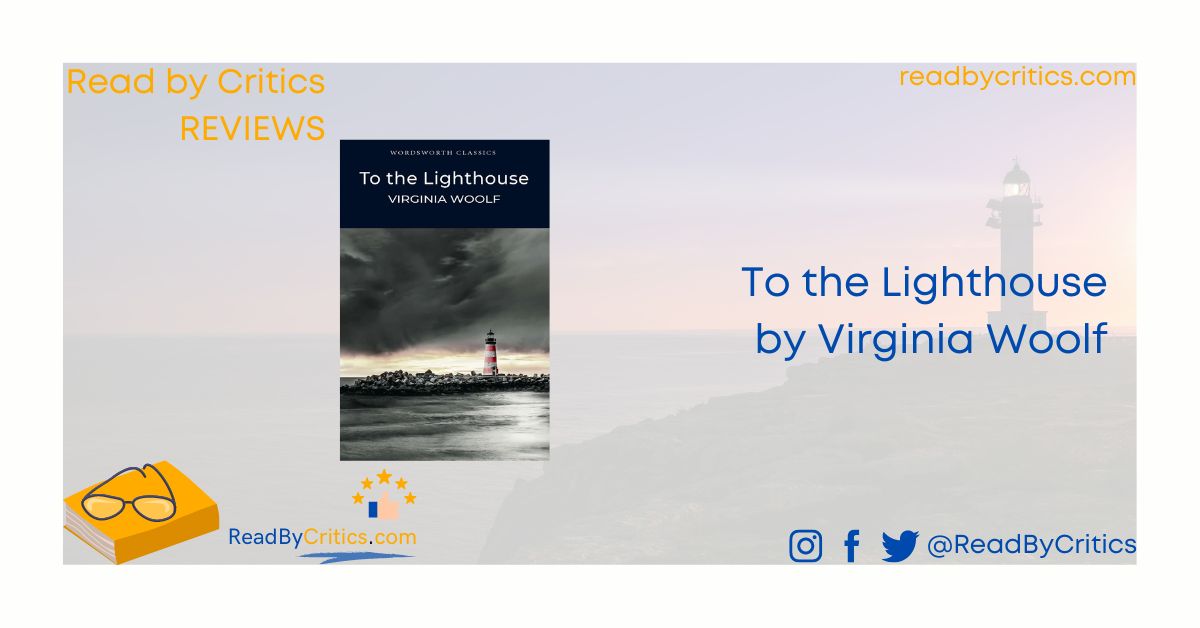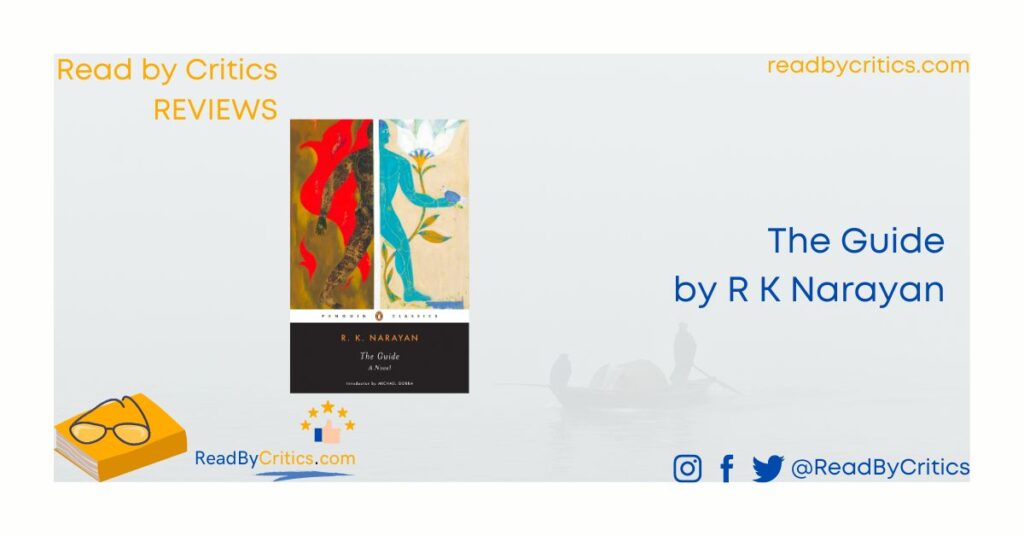Virginia Woolf is synonymous with feminism, women’s narrative in literature, leader of the modernist feminism movement and an icon when it comes to women’s empowerment in an all-round way. More than a novelist, a literary figure and an active player in the movement for equal rights for women, Virginia Woolf rose to fame with her fiction as well as non-fiction that were beyond the cliche, ordinary, and regular. In this article, I will review To the Lighthouse by Woolf, a novel that is still considered one of the leading works in the stream-of-consciousness genre by many critics. Admired by readers, researched in academics, and debated by bloggers, To the Lighthouse, as a novel, harbours many fruitful ambitions that many authors aim to achieve. However, the work has its flaws like any other work of literature. I hope to cover all the possible aspects revealed by numerous readings of the novel.
Virginia Woolf’s To the Lighthouse, published in 1927, has completed almost a century in print. It is a remarkable achievement for a novel published in the age of chaotic change as people were reeling through the aftermath of the First World War and the world itself was undergoing many changes. This novel stands as a testament to Virginia Woolf’s experimental and groundbreaking narrative style. Many critics believe that this novel exhibits the stream-of-consciousness narrative style, and even a perfect version compared to many other novels published in the same period. However, amidst appreciation from every corner for the writing style galore, there are many things about this novel that drew criticism as well. Though its innovative techniques and introspective musings on consciousness, existential crisis, and identity of a person in isolation and society offer glimpses of literary brilliance, the novel ultimately succumbs to a disjointed plot and an inaccessible writing style. One has to call it out as inaccessible because the novel’s story is rarely subject to subjective or even a combined objective interpretation. Many things happen in very few pages or nothing happens at all in many pages! An enigmatic storyline that draws its swing from readers’ insecurity of interpretation!
Let’s discuss the writing style first. There is no doubt that Woolf’s writing style in To the Lighthouse is distinctive, characterized by her trademark long, stream-of-consciousness passages that delve into the inner thoughts and perceptions of various characters in the novel. As a result, this introspective approach allows the author to let loose the characters to explore human consciousness in depth, and also the intricacies of individual experiences. Linguistically, Woolf’s prose at its best, is poetic and lyrical, capturing fleeting emotions and the ebb and flow of time with delicate precision(?). We will come to the flow of time and precision part in the latter stages of this review article. Overall, to sum up, her writing style, vivid descriptions and attention to sensory detail create a subtle sense of place and atmosphere, allowing readers to get close to the Ramsay family.
Sometimes, on rare occasions, the very strength of someone becomes the biggest weakness. The same happens with To the Lighthouse. Its energy and rhythm lie in the style that wonderfully journeys in a stream-of-consciousness style. However, it is within this stream-of-consciousness narrative structure that there are many loopholes and the novel encounters significant obstacles. For many readers, the absence of conventional plot progression and a discernible storyline makes the novel inaccessible and obscure. Woolf’s intricate interplay of thoughts and impressions may delight many readers who love to read novels in the style of Ulysses, A Portrait of the Artist as a Young Man, The Unnamable, Molly and Murphy. However, this novel (and others mentioned) can be disorienting, too fragmented, annoying and perplexing for many readers who are accustomed to reading novels with a regular plot, discernible storyline, and a course of action where characters’ deeds are perceivable in their possible dimensions. In total, we can assume that To the Lighthouse may alienate a wide chunk of readers away from itself, but certainly bank on the most ardent enthusiasts of experimental literature. Is it good? We cannot say! Is it bold and daring on the part of Woolf? Oh Yeah!
To extend the argument of its failure to attract a wide readership because of its obscure narrative design, the plot of To the Lighthouse does not come to its rescue either. It suffers from a lack of momentum and narrative drive. From the author’s point of view, indeed, her attempt to showcase the complexities of human experience does not necessarily demand a traditional plot structure. Nevertheless, the novel’s aimlessness and lack of clear direction certainly have an impact on the overall appeal of the work of literature. It decisively leaves readers yearning for a stronger narrative anchor – a central force or ‘lighthouse’ that could hold everything together and show the right path of interpretation and perception to the readers. Talking about the motifs in the novel, I feel that the Ramsay family’s proposed journey to the lighthouse serves as a distant but elusive, daring but reckless goal, and the novel, eventually but certainly, becomes more and more aligned with the interior lives of its characters rather than external events which could keep readers intact. This inward focus on the varied consciousness of characters, while a hallmark of modernist literature without a doubt, can lead to a sense of detachment and narrative inertia.
The characters also bear the weight of Woolf’s experimental approach. While they exhibit moments of psychological insight and complexity, compelling readers to applaud and appreciate Woolf’s success in taking them on a journey to the complex world of consciousness, they often remain distant and elusive. As expected, with the passage of time and flipping pages, the lack of fully fleshed-out characters hinders readers’ ability to form meaningful connections and empathise with their experiences. In other words, what begins as a promising journey in the psychological depths of characters, develops into an experience of alienation and vertigo – very few may know what transpires over time (as indicated in the novel). The vessels created by Woolf, The Ramsay family, who perform the duties of lab rats in this critical literary experiment of the novelist, and a successful one, fail to engage readers on a deeply emotional level, resulting in a sense of detachment and an emotional distance that pervades the novel. As a reader, you seldom care who died and who lived. You just read. With as much fragmented notion of attachment. As the novel itself moves with. True. Confusion overpowers readers as a chaotic flow of thoughts empowers the characters. Perplexing.
Read this also – Interesting and unknown facts about Virginia Woolf
For new readers, and the experienced ones too, Virginia Woolf’s prose can be dense and challenging to decipher, requiring a heightened level of engagement and literary acumen. Which, I believe, many readers from diverse backgrounds of life seldom care to possess. The intricate sentence structures and digressive tangents demand careful attention from readers of To the Lighthouse which, except for those with an academic background in literature, people seldom have time to do. And this experience of delayed decoding eventually ends up alienating readers seeking a more accessible reading experience. A win for some ends up mutating into a loss for many!
Historically, and for many including myself, To the Lighthouse by Virginia Woolf would remain a distant beacon of modernist literature and a masterpiece in the stream-of-conscious genre… which, despite all its audacious and innovative narrative techniques and the bold character sketches by the author, may remain a prime example of ‘grapes are sour’ fable in real life. For many readers who read novels rather than studying those, it only ends up offering glimpses into the complexities of human consciousness and the mysterious passage of time. It is nothing like regular novels where characters’ experiences are close to that of readers – Oak’s sufferings as a true lover or Jane’s ultimate comprise with her fate and Mr Rochester – creating a perfect bonhomie between readers and the characters that culminate in a satisfactory feeling to reading something one could relate too. To the Lighthouse, on the other hand, pushes regular readers away from itself, allowing only doctoral and postdoctoral studies on its superficial storyline, which for many holds a key to human sufferings and complexities of emotions (how). Can we say that it remains a literary experiment gone over the top? Or, a more daring statement would be a literary experiment gone wrong and eventually failed… but published with its failure and somehow (by many) touted as a literary masterpiece with merits known to some and demerits known to many. What do you think?
I am all in for reading this novel. And I also inspire others to read the same. If you can cope with its dragged plot that is seldom found and a lyrical prose style that captures less and hides more to be deciphered and decrypted with a copy of How to Crack Secret Codes, you may be able to read novels by James Joyce, Samuel Beckett, Laurence Stern and many more on the list of literary accomplishments.
Get a copy of this novel from Amazon India – click here.
Review by Ashish for ReadByCritics
To the Lighthouse by Virginia Woolf – Book Review
-
ReadByCritics Rating
Summary
An artistic success, a literary experiment (debatable whether success or failure) that created a novel inaccessible to many and a treasure trove for a few… To the Lighthouse remains a distant beacon… flashing in quick successions that doen’t aid a wailing ship!




